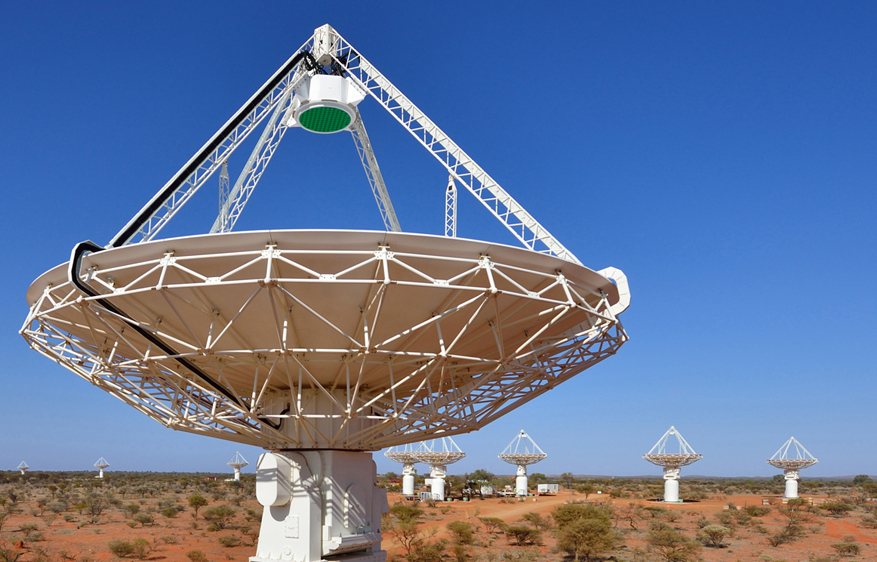By Emily Lehmann
There’s a new star in the making in the world of astronomy, with our Australian Square Kilometre Array Pathfinder (ASKAP) named as a finalist in The Australian Innovation Challenge’s Manufacturing, Construction and Infrastructure category*.
We recently shared some of the first images produced by the amazing ASKAP telescope. It comprises a cluster of 36 radio dishes that work in conjunction with a powerful supercomputer to form what is, in effect, a single composite radio telescope a massive six kilometres across.
This allows it to survey the night sky very quickly, taking panoramic snapshots over 100 times the size of the full moon (as viewed from Earth, of course!).
One of the ASKAP radio dishes, located in a remote area of Western Australia.
The world-leading facility is revolutionising astronomy, and this award nomination is a welcome recognition. You can vote for it here – just scroll down to the bottom of the page.
Now, for all you space cadets, here’s five astronomical facts about why ASKAP is out of this world and a sure-fire winner:
- ASKAP’s 36 radio dishes, each 12 metres in diameter, give it the capacity to scan the whole sky and make it sensitive to whisper-quiet signals from the Milky Way.
- ASKAP is an outstanding telescope in its own right, as well as a technology demonstrator for the Square Kilometre Array (SKA). This pioneering technology will make ASKAP the fastest radio telescope in the world for surveying the sky.
- Once built, the SKA will comprise of a vast army of radio receivers distributed over tens to hundreds of kilometres in remote areas of Western Australia and Africa.
- The SKA will generate five million million bytes of information in its first day. That’s almost as many grains of sand on all of the world’s beaches.
- ASKAP is located in the remote Murchison Shire of Western Australia, which was chosen because there is hardly any human activity and so little background radio noise.
ASKAP is one of four CSIRO projects already in the running for different categories in the Oz’s Innovation Challenge (we’ve also written about swarm sensing and Direct Nickel). You can #voteCSIRO for any and all of them – just follow the links from the Challenge’s home page!


